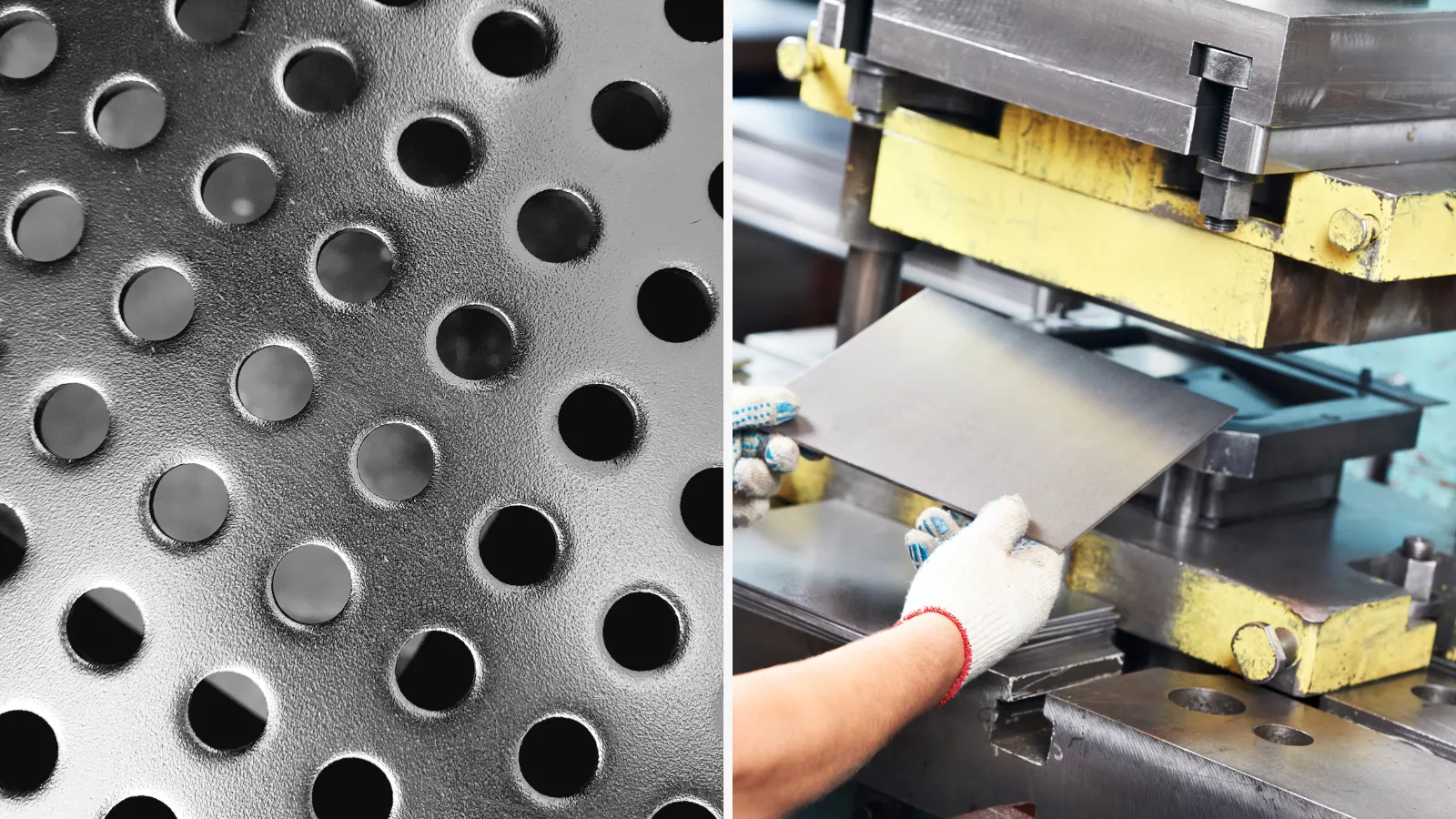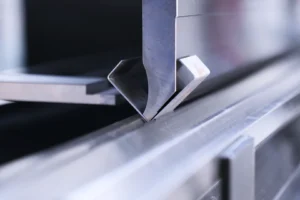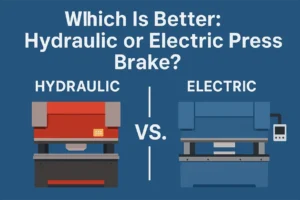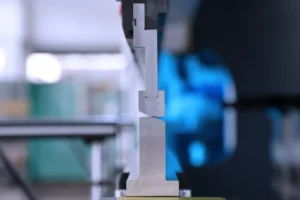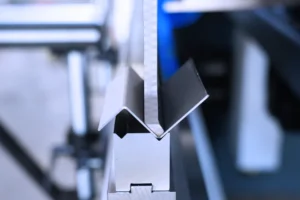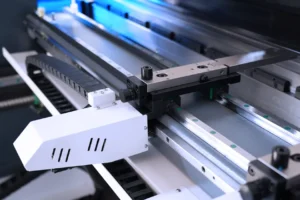When it comes to sheet metal shaping, the terms 'metal punching and stamping' are often used interchangeably. However, they address slightly unique needs in the metalworking industry, and understanding their distinctions is crucial for selecting the appropriate metal punching and stamping equipment. At KRRASS, we specialize in manufacturing advanced metal forming machines, ensuring that you have the right equipment for your specific fabrication needs.
Metal punching is a subset of the broader stamping process, focusing primarily on creating holes in sheet metal. Stamping, on the other hand, involves a range of processes that shape metal sheets into intricate 3D forms. The choice between these processes is a critical decision that affects material usage, production lead times, and overall costs, especially in high-volume manufacturing environments.
In this article, we will delve into the differences between punching and stamping, helping you make an informed choice when investing in equipment. We will explore the working principles, materials, and equipment required, as well as the associated costs of each process.
Table of Contents
What’s Stamping?
Stamping is a cold-forming process that uses high-pressure presses to shape flat metal sheets into specific forms. At KRRASS, our stamping presses are designed to manage a variety of techniques, including punching, blanking, embossing, bending, flanging, and coining. Stamping presses are versatile, capable of performing multiple operations in a single cycle, which can reduce lead times and costs.
Stamping is a key technique in industries such as automotive, aerospace, electronics, and consumer goods. It is used to create body panels for cars, aircraft components, electronic connectors, and household appliances. KRRASS offers a range of stamping machines that cater to the full spectrum of production needs, from simple shapes to complex geometries.
Advantages of Metal Stamping
- Cost-effective: Stamping is more cost-effective than other methods like die casting, especially in high-volume runs.
- Versatility: Capable of performing various operations such as bending, punching, and forming, making it ideal for creating complex shapes.
- Efficient Setup: Setup times are typically lower than for casting and machining methods, allowing for quicker turnaround times.
- Material Reuse: Scrap material from stamping can often be reused, reducing material costs.
- Large Size Flexibility: Stamping can accommodate parts from small to large, ranging from 10mm x 300mm to 2,000mm x 10,000mm in dimensions.
Limitations of Metal Stamping
- High Initial Investment: Stamping presses can be costly, particularly for simple designs due to expensive die setups.
- Higher Scrap Rate: Compared to some other processes, stamping may produce more scrap material.
What is Metal Punching?
Metal punching, on the other hand, is a more specialized process that focuses on creating holes in sheet metal. A punch press uses a punch tool to force through the metal sheet, creating precise, clean holes or cutouts. The separated piece, known as a "slug," is considered waste, but the remaining material stays intact.
While punching is an auxiliary process that complements stamping, it is a crucial operation in industries that require high precision in hole-making. At KRRASS, we offer state-of-the-art punching equipment that delivers fast, precise cuts, ideal for components like brackets, panels, and enclosures.
Advantages of Punching
- Precision: Punching creates clean, accurate holes without the need for additional finishing.
- Cost-Effective: Compared to laser cutting, punching is a more economical option.
- Speed: Punching is faster than drilling, making it ideal for high-volume applications.
- Material Versatility: Punch presses work efficiently with a variety of metals, including steel, aluminum, and copper.
- Lower Tooling Costs: Punch presses have lower die and tooling costs compared to stamping presses.
Limitations of Punching
- Limited Material Thickness: Punching is most effective on sheet metals ranging from 0.5mm to 6mm in thickness.
- Deburring Required: Punching may leave burrs around the hole, necessitating additional deburring or finishing processes.
Metal Punching and Stamping: 9 Key Differences
At KRRASS, we understand that choosing the right equipment is essential for your production line’s efficiency. To help you make the right choice, let us compare the two processes based on critical factors:
| Aspect | Metal Punching | Metal Stamping |
| Major Function | Hole cutouts | Shaping into 3D geometries and cutting |
| Supported Thickness | 0.0036 – 0.5 inches | 0.0001 – 6 inches |
| Tools | Punch and die set | Heavy-duty stamping machine |
| Setup Cost | 200 - 10,000 | 10,000 - 100,000+ |
| Lead Time | Low | High |
| Material Waste | High | Low |
| Applications | Perforated casings, brackets, ventilation holes | Body panels, casings, surgical components, external housings |
Process Principle
Both punching and stamping rely on a press and die system. However, their end results differ significantly. Stamping is used to shape the metal into 3D structures, such as bending, flanging, and forming. Punching, in contrast, focuses solely on creating holes or cutouts in the sheet metal, maintaining its overall geometry.
Material Thickness
Stamping machines are designed to manage a broader range of thicknesses, from extremely thin sheets to thicker materials up to six inches. KRRASS’ stamping presses are equipped with specialized dies that allow for forming and cutting even heavy-duty materials, including steel bars up to three inches thick. Punching, however, is most effective on thinner materials, typically ranging from 0.5mm to 6mm thick.
Design Complexity
Stamping is a highly versatile process that can create intricate, complex geometries using a combination of techniques. At KRRASS, we provide stamping machines capable of producing complex parts with high precision. Punching, however, is focused on creating simple holes and is often used after stamping to add features like perforations.
Tools and Equipment
KRRASS offers a range of punching and stamping machines that cater to various production needs. Our punch presses are compact and efficient, ideal for precise hole cutting. Meanwhile, our stamping presses are heavy-duty machines designed to manage complex forming and cutting operations. Whether you need a basic punch press for hole-making or a high-powered stamping machine for full-forming capabilities, KRRASS has the equipment you need.
Setup and Operational Costs
Punch presses are more affordable due to their simpler design and single-function operation. KRRASS offers punch presses at competitive prices, making them a cost-effective solution for businesses. Stamping presses, while more versatile, come with higher initial investments and maintenance costs due to their complex tooling and heavy-duty design.
Lead Time
Because punching is a single-step operation, it typically has a shorter lead time than stamping, which may involve multiple stages. At KRRASS, we ensure quick turnarounds for our punching machines, making them perfect for time-sensitive projects.
Material Waste
Metal punching typically produces more scrap material, known as slugs, which is an unavoidable byproduct of hole-making. Stamping, by contrast, generates less waste, as many of its operations reshape metal without removing material. KRRASS’ advanced stamping presses are optimized for minimal material waste, making them an eco-friendly choice for high-volume production.
Applications
Metal punching is ideal for creating holes in components such as automotive brackets, electronics casings, and appliance panels. On the other hand, stamping excels in producing 3D components like body panels for vehicles, complex aerospace parts, and precision surgical instruments.
How KRRASS Can Help with Your Sheet Metal Fabrication Needs
Whether you need a simple punch press or a multi-stage stamping machine, KRRASS has the expertise and equipment to meet your sheet metal fabrication requirements. Our punching and stamping machines are designed for precision, efficiency, and reliability, ensuring your production line operates smoothly and cost-effectively. With our equipment, you can create high-quality parts for industries ranging from automotive to medical devices, all while minimizing waste and maximizing output.
At KRRASS, we are committed to providing you with the best equipment for your needs. Whether you are looking for punching, stamping, or a combination of both, our team is here to help. Let us support you in bringing your designs to life with the precision and efficiency that only KRRASS equipment can provide.
